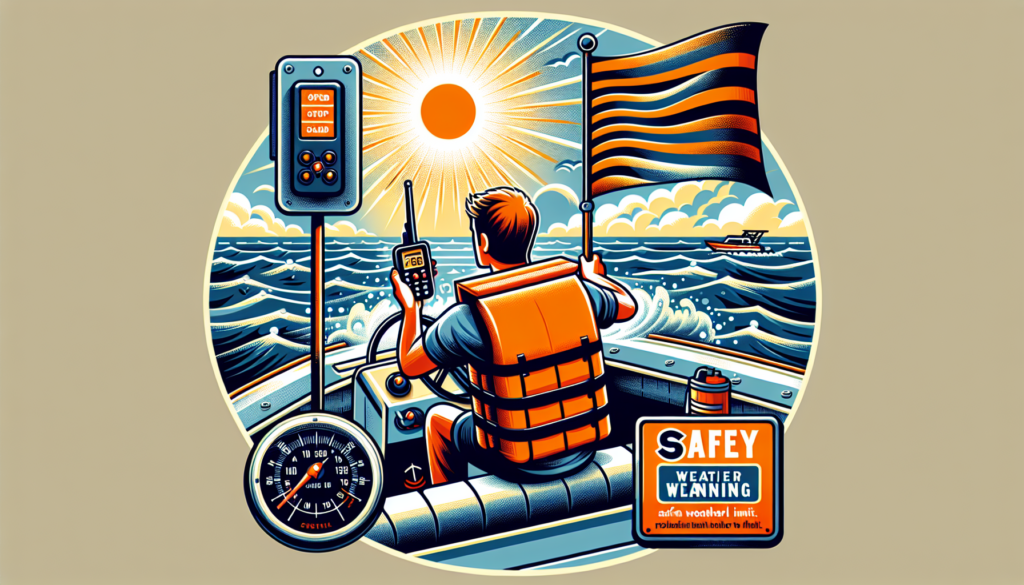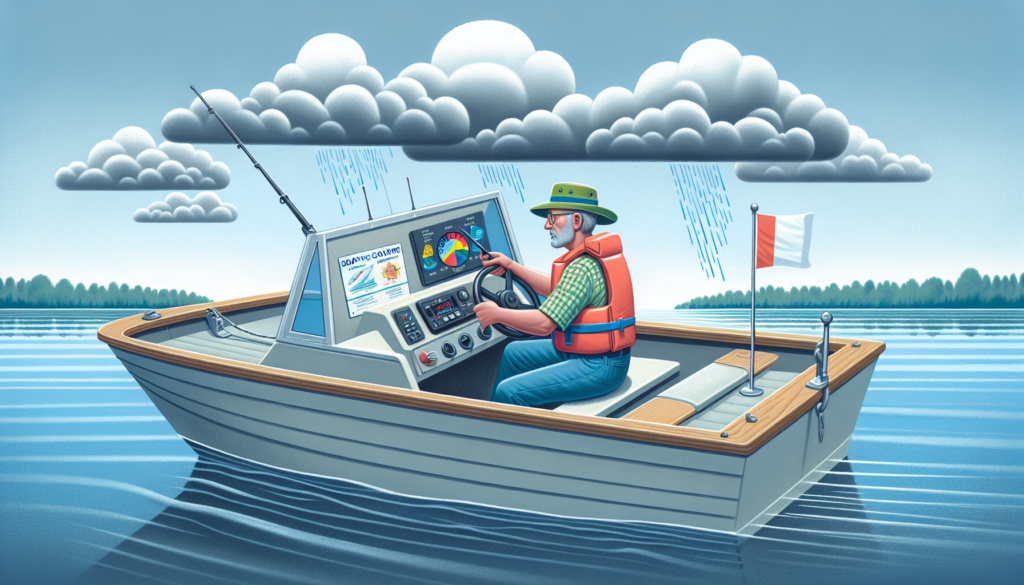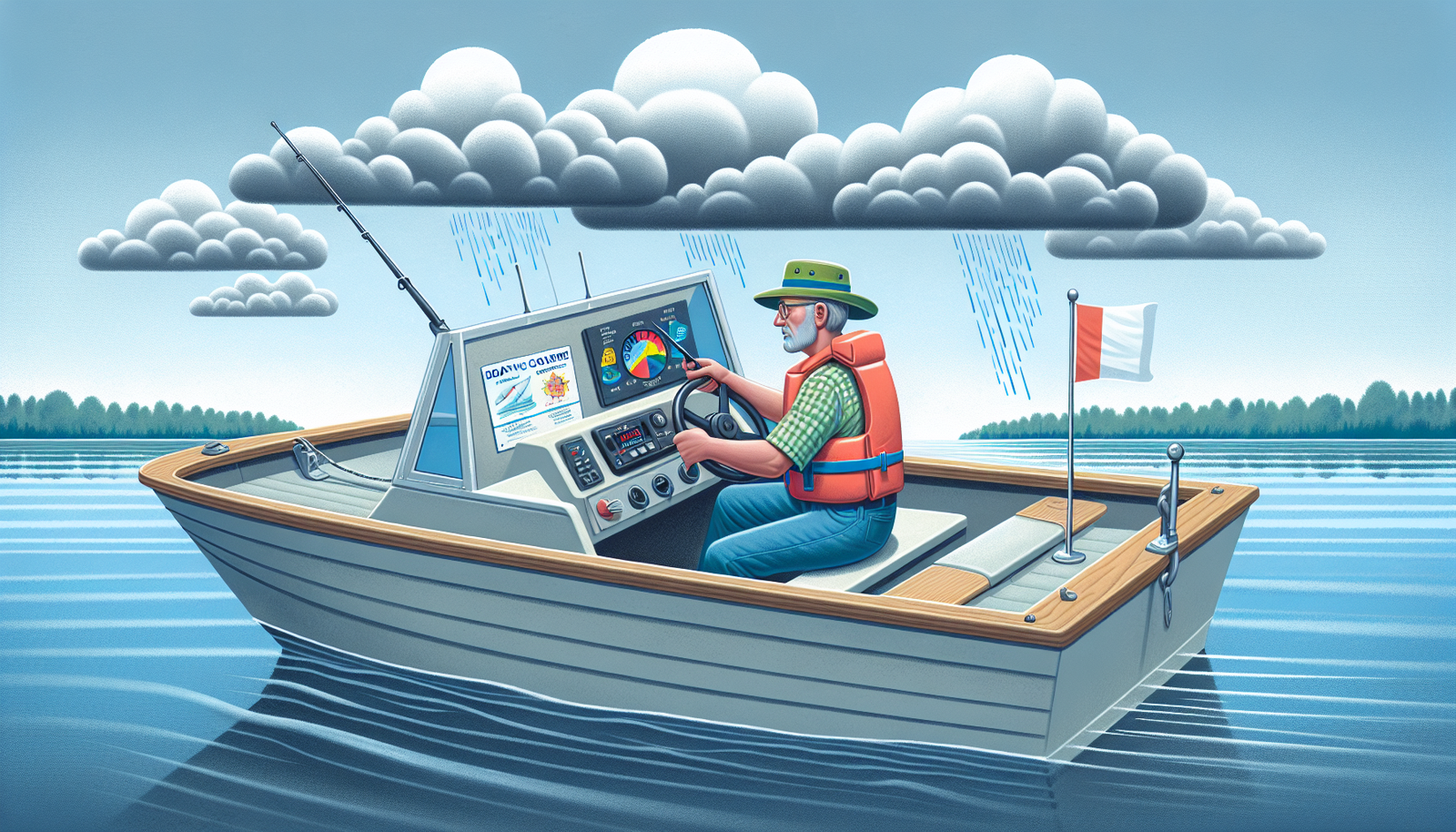Navigating through the exhilarating waves in your sleek boat might instill a sense of thrill and freedom. However, maintaining safety remains paramount in these adventurous pursuits. This enlightening piece, “How To Ensure Safe Boating Practices” is a crafted compilation of crucial tips and methods designed specially for you, to safeguard your spirited maritime adventures. Unleashing key knowledge and intelligent findings, this article holds your hand and navigates you beyond any trivial and potential boating hazards, ensuring you can enjoy your voyage unhampered. So come, transform yourself into an educated and responsible boater, ready for the unpredictable ebbs and flows of maritime navigation.

Understanding the Importance of Safe Boating
As you glide across the surface of the water, with the wind in your hair and the feel of the helm under your hands, there’s nothing quite like the sense of freedom that boating can provide. However, there’s a deep-seated responsibility that comes with this freedom. Just like the open road, the open water has its own rules, dangers and requirements for safe and responsible use.
Why safe boating matters
Being out on the water, miles away from civilization, you are your only saving grace. Even minor mistakes can have significant consequences when you’re out there, making safe boating critically important. Not only does it protect you, your passengers, and your property, but it also ensures that your relaxing day out on the water does not turn into an avoidable tragedy.
The impact of unsafe boating practices
As with any form of transport, unsafe practices when boating can lead to disastrous outcomes. Collisions, sinking and getting stranded are just a few possible consequences of negligence at sea. Additionally, boating mishaps can result in destruction of aquatic ecosystems through pollution, or disturbing marine animals in their natural habitats.
Stats and reports on boating accidents
According to the U.S Coast Guard, a significant number of boating accidents are reported each year, many of which result in fatalities. These statistics serve as a stark reminder of the gravity of the situation and underline the importance of implementing safe boating practices whenever you decide to venture out onto the water.
Knowing the Basic Rules of Navigation
The art of boating isn’t just about steering your boat in a straight line. There’s a myriad of navigation rules that all sailors must follow to ensure their safety and the safety of others around them.
The role of the U.S. Coast Guard
As the custodians of the nation’s waterways, the U.S. Coast Guard has set out comprehensive rules for navigation. These regulations dictate who has the right of way, how to signal your intentions to other vessels and how to act in an emergency situation.
International navigation rules
Beyond national waters, there exists a set of rules known as the International Rules of the Road, aimed at preventing collisions at sea. These agreements standardize nautical etiquette internationally, letting sailors around the world communicate effectively and navigate safely.
Understanding nautical charts and compass directions
Even in this modern age of GPS and automatic pilot, being able to read nautical charts and understand compass directions is crucial. They can be your lifeline in the event of an equipment failure, and allow you to plot a course accurately regardless of visibility conditions.
Essential Boating Equipments for Safety
Preparedness is half the battle won. Carrying essential safety equipment can mean the difference between life and death in an emergency.
Flotation devices and life jackets
One of the cardinal rules of boating safety is to have enough lifejackets on board for each passenger, and to ensure these flotation devices are easily accessible in case of an emergency.
Fire extinguishers
Fire on a boat can escalate quickly due to the presence of fuel and confined spaces. A working fire extinguisher should be within easy reach, and all passengers should be instructed on how to use it.
Methods of communication on water
In case of any emergency on the water, you’ll need to be able to send distress signals or call for help. Radios, flares, whistles, and other signaling devices are therefore crucial.
First aid kits and safety tools
A comprehensive first aid kit as well as basic safety tools like a sharp knife, torch, and mirror for signaling, can prove to be incredibly helpful in the event of a mishap or accident.

Weather Awareness and Boating
The dynamic nature of weather on the water adds another layer of complexity to boating. Being cognizant of the weather can help you anticipate potential problems and adjust your boating plans accordingly.
Boating in different weather conditions
From glassy calm to raging tempest, different weather conditions can dramatically affect the behavior of your vessel and your experience out on the water. Learn how your boat responds to different conditions, and adjust your plans and preparations accordingly.
Understanding marine forecasts
Marine weather forecasts offer invaluable information to anyone venturing out to sea. They provide details about wind, wave conditions, visibility, and more. Accurately interpreting these forecasts can save you from dangerous situations.
Preventive measures during storms and high winds
When faced with inclement weather, knowledge and preparedness can help keep you safe. Keeping track of weather forecasts, wearing appropriate gear, adjusting your boat’s speed, and maintaining a safe distance from other vessels are just a few preventive measures to keep in mind.
Understanding Alcohol and Drug Use While Boating
Just like driving, boating under the influence of alcohol or drugs is not only illegal but extremely dangerous. It impairs judgement, coordination, and reaction times – all of which are crucial for safe boating.
The risks of boating under the influence
Boating under the influence drastically increases the risk of accidents. It can lead to poor judgement calls, reduced motor control, and slowed reaction times, creating a perfect recipe for disaster.
Legal consequences of impaired boating
Beyond the immediate danger to lives and property, boating under the influence can have serious legal repercussions. These range from fines to license revocation, and even imprisonment.
Promoting a drug-free boating environment
Promoting a culture of drug-free boating starts with each individual boater. By communicating the risks and implications of boating under the influence to passengers, setting clear rules about substance use when boating, and refusing to boat under the influence yourself, you contribute to a safer boating environment for all.
Safe Loading and Distribution of Weight
Interestingly, the safety of your boat isn’t just about what goes on above the waterline.
Understanding the boat’s capacity
Exceeding your boat’s capacity can lead to instability and risk of capsizing. Make sure to check your boat’s capacity plaque, which indicates the maximum weight your vessel can safely carry.
Proper loading of gear and equipment
Securing gear and equipment properly is just as important as not overloading your boat. This not only avoids shifting of weight but also keeps pathways clear for easy movement in case of an emergency.
Balancing weight for safety and stability
Avoiding an uneven distribution of weight is crucial to maintaining stability. Pay attention to how your boat is balanced when loading and adjust accordingly to keep your vessel stable.
Navigational Aids and Their Importance
Navigational aids are tools used to determine a boat’s position and chart a safe course. They are the unsung heroes that guide our vessels and help us avoid conflicts on busy waterways.
Overview of different navigational aids
Navigational aids come in different shapes and sizes – from lighthouses, buoys and beacons to more modern counterparts like Radar, GPS and AIS. They all have their own role to play in ensuring your vessel stays on course and safe.
The use of buoys and markers
Buoys and markers form a vital part of the navigational aids system. These floating signs provide crucial information about water depth, hazards, direction, location, and more.
Understanding the maritime signaling system
A semaphore of the sea, the maritime signaling system enables communication between vessels. Knowing how to interpret these signals is essential to safe passage and avoiding collisions.
Engine Maintenance and Safety
On the water, your engine is your lifeline and treating it right is by far one of the most critical aspects of safe boating.
Routine checks for engine health
Regular assessments of your engine’s health are the first line of defense against mechanical failures. Look, listen, and feel for any unusual changes in your engine’s performance.
Understanding fuel safety
Knowing how to handle and store fuel properly can significantly reduce the risk of fire and explosions. Be mindful of ventilation, potential sources of spark, fuel leaks, and always carrying some extra fuel.
The importance of carrying spare parts
Even with diligent maintenance, parts can break or wear out. Carrying basics like extra belts, hoses, spark plugs and other spare parts can help you perform quick repairs on the water, potentially saving your trip and your vessel.
Emergency Preparedness on Boat
Most boating trips go off without a hitch, but being prepared for the worst can give you the best chance of making it through an emergency unscathed.
Learning survival techniques on water
Knowing what to do when things go wrong can make a huge difference when it comes to survival. This includes everything from managing to stay afloat without a life jacket, to signaling for help and surviving harsh weather conditions.
Having an emergency plan
Before setting off, it’s essential that you and your crew have a clear plan of action for various emergency scenarios. Everyone on board should be aware of these plans.
Docking, anchoring and towing procedures in case of emergency
In case your boat becomes incapacitated, knowing how to safely dock, anchor, and call for a tow can prevent further damage or issues.
Safe Boating Courses and Certifications
Treading waters safely is both an art and a science, and like any such discipline, it requires learning, practice, and continuous upgradation of skills.
Exploring different boating courses
There are numerous boating courses available, catering to different levels of experience and type of boating. Explore these options to improve your boating knowledge and skills.
The benefit of having a boating certificate
Besides providing a solid foundation for your boating activities, having a boating certificate can also lead to discounts on boat insurance and increased confidence on the water.
Associations promoting safe boating practices
Joining boating associations can give you access to resources, help foster a culture of safety, and keep you updated on the latest safety procedures, rules, and technologies.

